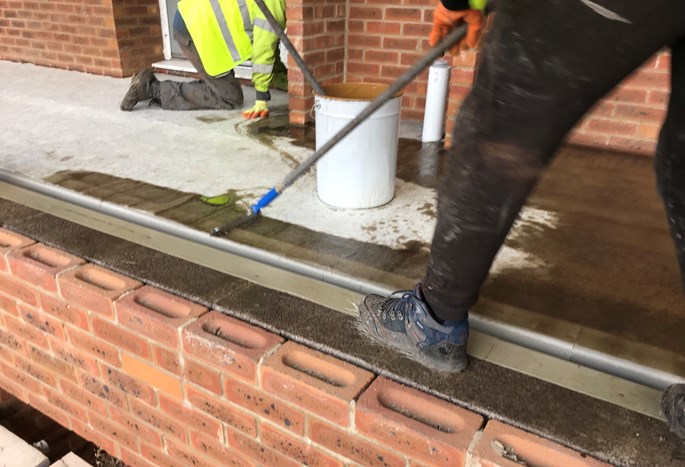2020 set for record levels of water and chemical leaks

Leaks, water ingress and corrosion cost the U.K. economy over £80 billion per year and globally the value is 3-4 % of GDP.
The most common sources include water and chemical storage tanks, gutters, gullies and other industrial equipment.
Many facility and property owners fail to detect leaks before they happen and in some cases even when the leak has occurred.
Causes are usually age-related degradation and accelerated wear and tear and in some cases physical damage. This problem is compounded by the fact that it is hard to place a lifetime on many surfaces and structures and to assess their leak potential without routine assessment.
Indeed, surveys are time consuming and do not always detect leaks, even with specialised equipment.
Whilst sensors exist for real-time monitoring of more hazardous and expensive liquids like oil and chemicals, water, for instance, is not monitored on non-industrial or commercial sites, especially if the source of the leak is external (e.g. rainwater) or if a domestic or low cost agricultural facility that does not
According to Stephen Bowen at Strandek, a specialist coating company , an effective solution is prevention, of which there are two types: (1) regular inspection and monitoring and (2) effective surface coating and lining.
“Firstly, we recommend a full survey and assessment on an annual or bi-annual basis as it is important to identify the source of the leak, the extent of damage and any risks involved”, he says.
They then consider making repairs and relining or recoating the surfaces.
Stephen Bowen also recommends choosing high performance resins. “In most cases, repainting the surface is absolutely not a solution. Paint is brittle and does not cross-link, that is, form chemical bonds that create a single, homogenous structure, so it breaks easily.”
Instead, he recommends a resin-based composite coating or lining system. These are comprised of liquid resin and a textile or fibre-based backing that provides structural reinforcement. A classic example is GRP, short for glass reinforced polyester. These lining systems have lifetimes that can approach 50 years in the right circumstances – they’re not only used in construction, the space industry uses them on spacecraft due to their overall durability, high strength to weight ratio, flexibility under stress and long lifetimes.
https://www.sciencedirect.com/science/article/abs/pii/0011227588900033
They are also strong and durable. GRP, for instance, has consistently been shown to outperform steel; it is lighter and stronger – that’s why it’s used in the space industry too. It also has excellent anti-microbial properties and chemical resistance and compatibility testing is also available for bespoke chemicals.
The savings can be significant.
A new 20,000 litre concrete modular storage tank typically costs upwards of £6,100, with delivery costing around £1,000 and installation and downtime another £1,000. A total of £8,100.
Refurbishment and relining using GRP, on the other hand, can cost as little as £3,000. A range of sealing agents can be used to repair cracks and underlying damage, so the actual finish is a watertight barrier, the lifetime can often be extended by 10 to 20 years, on average at a fraction of the cost – in this instance under 30-40% compared to a newly installed one. Better rates are also afforded on larger projects; the larger the surface area, the lower the cost.
He also recommends polyurethane to be an effective barrier. As a more flexible polymer, it can come with a textile backing that acts to provide structural strength and significant flexibility – perfect for structures that and prone to expanding and contracting.
“We tend to avoid epoxy”, he says, “as the resin is not flexible like polyester and polyurethane and we prefer to use it on more demanding flooring applications like warehouse floors where it can be combined with aggrrgate.”
These alternatives aside, GRP composites remain highly effective coatings, offering seamless waterproofing, structural protection via a thin sub-5 mm layer that has been unrivalled for decades.